This vivid green pea and asparagus risotto is creamy, rich, and perfect for the spring. It’s made with seasonal vegetables like fresh asparagus and two kinds of peas.
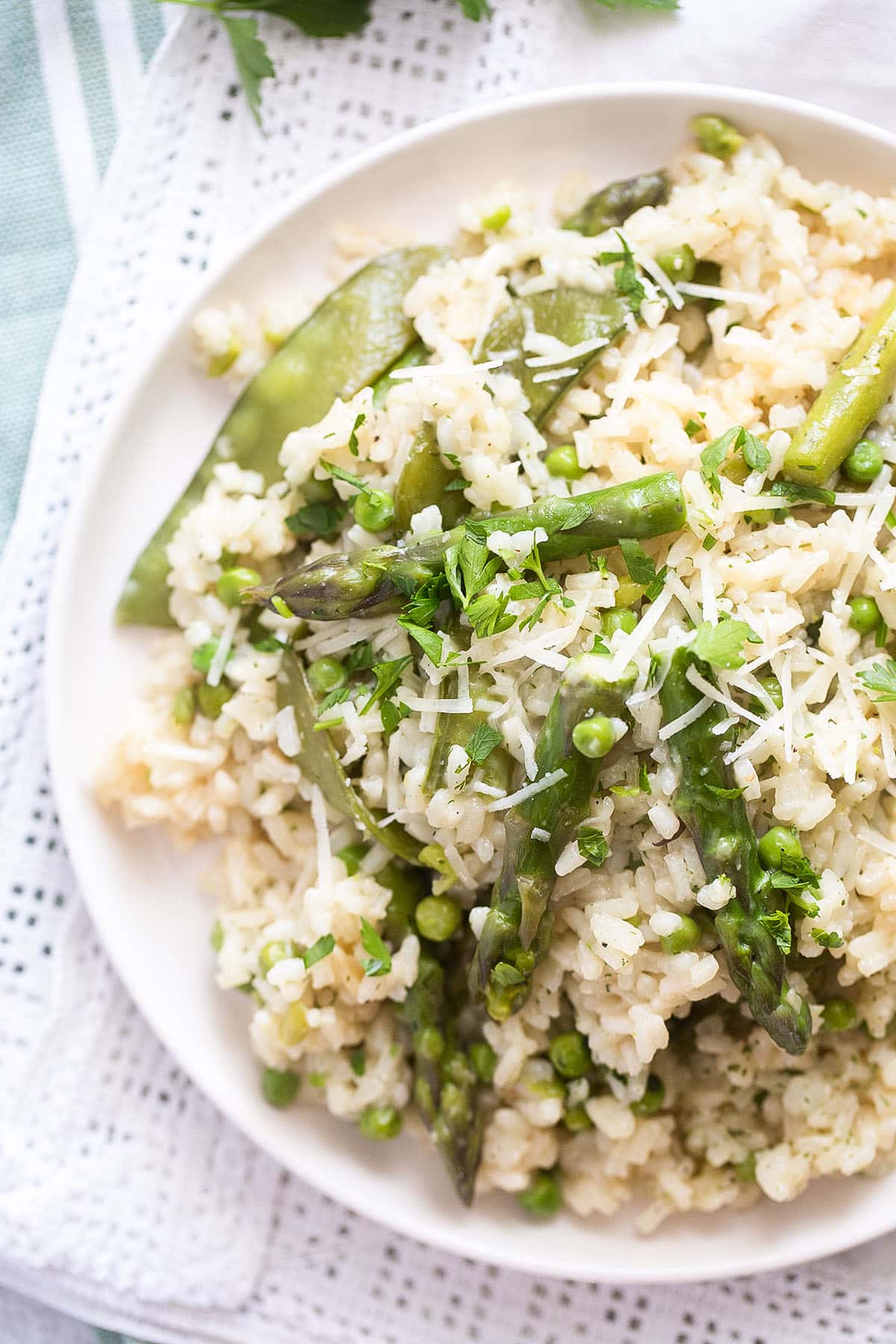
Pea and asparagus risotto is a creamy and flavorful dish that combines the freshness of asparagus and peas with the rich and comforting texture of risotto.
This pea and asparagus risotto recipe offers a delicious combination of flavors and textures, making it a popular choice for springtime meals; it’s the perfect risotto to celebrate the asparagus season.
Check out another spring risotto recipe, this incredible Wild Garlic Risotto. You could also try Salmon Risotto or Creamy Zucchini Risotto. And when the fall comes, remember Pumpkin Risotto, Chicken and Pumpkin Risotto, Gorgonzola Risotto, or Leftover Turkey Risotto.
Jump to recipe
Recipe ingredients

Risotto rice: Arborio rice is a short-grain rice commonly used for risotto. Carnaroli Rice or Vialone Nano are also great.
Asparagus: About 1 pound. You can also use white asparagus. In this case, peel it and cook it a bit longer than you would green asparagus.
Two kinds of peas: Frozen and sugar snap peas. Make Pea and Bacon Risotto, too.
Liquids: ½ cup of dry white wine, such as Pinot Grigio or Sauvignon Blanc (optional), and vegetable broth (homemade or store-bought). You can also use chicken stock or chicken broth.
See the recipe card for full information on ingredients and quantities.
How to make pea and asparagus risotto?
Pour the vegetable broth into a jug pan, place it on the stovetop on low heat, and keep it simmering all through the cooking process.
Peas: Remove the frozen peas from the freezer and let them thaw on the counter until needed. If using fresh snap peas, wash them and let them drain in a sieve until needed.
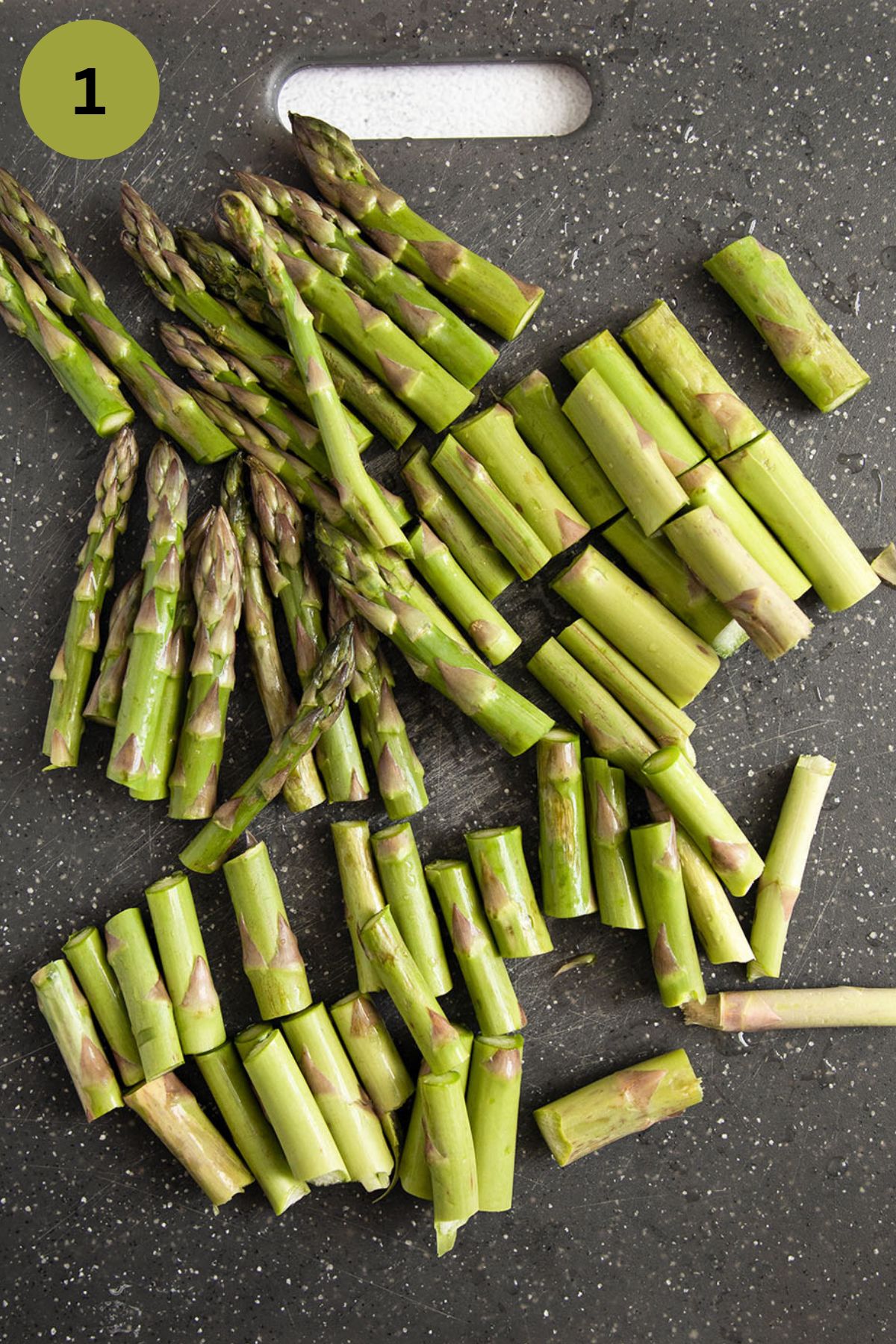
- Asparagus: Wash it and remove its lower, tough ends. Cut each stalk into smaller pieces (3-4, depending on size). Keep the asparagus tips in a separate bowl (1).
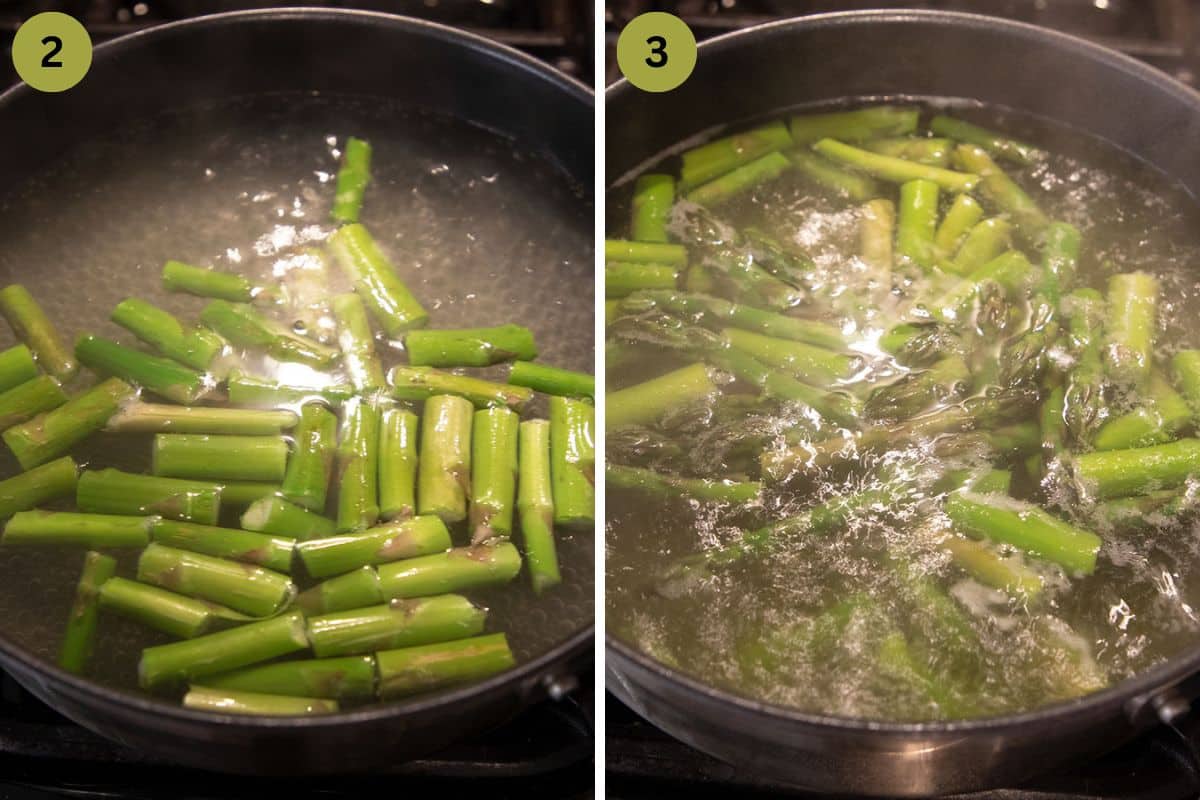
- Cook asparagus spears in boiling water for 2-3 minutes (2). Add the tips and cook for another couple of minutes (3). The cooking time depends on the thickness of the asparagus. Drain and reserve some of the liquid.
- After cooking the asparagus, you can use the same pan to cook the asparagus and pea risotto; wipe it well before cooking.
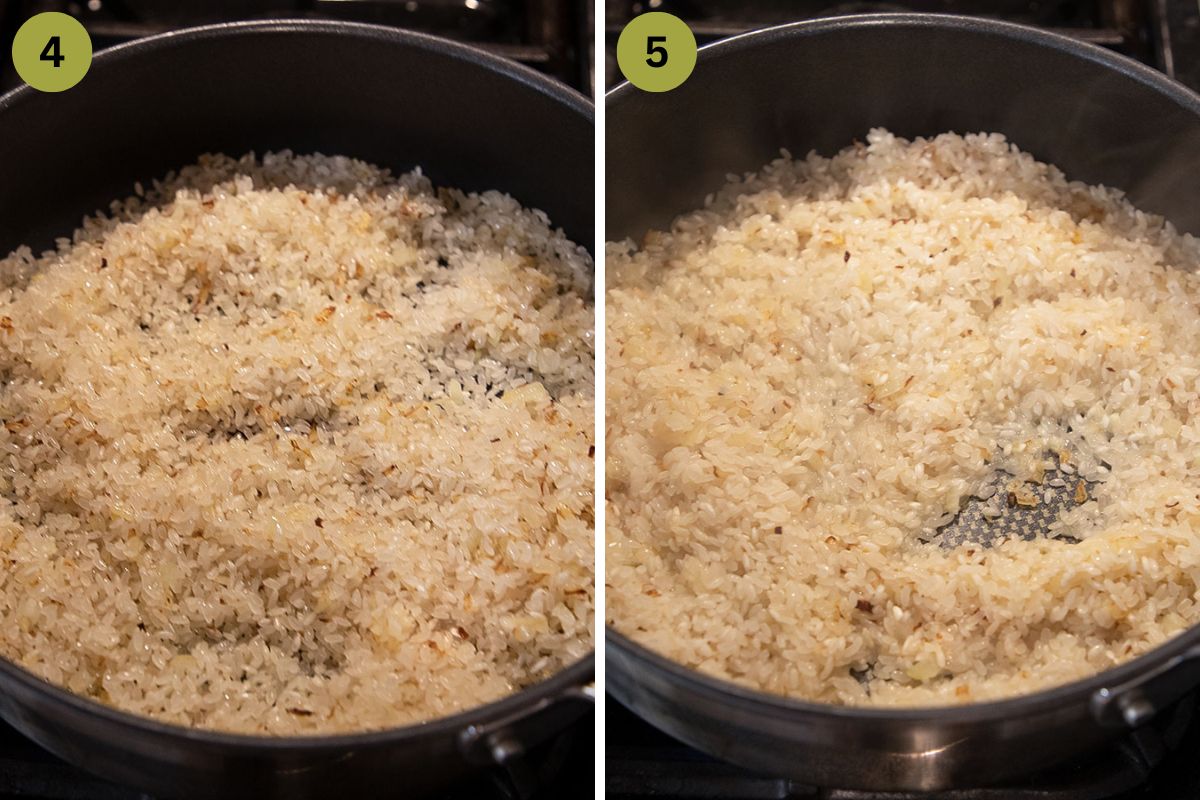
- Cook the shallots until translucent. Add rice and stir to coat (4).
- Pour in the wine, stir well, and let it bubble shortly (5).
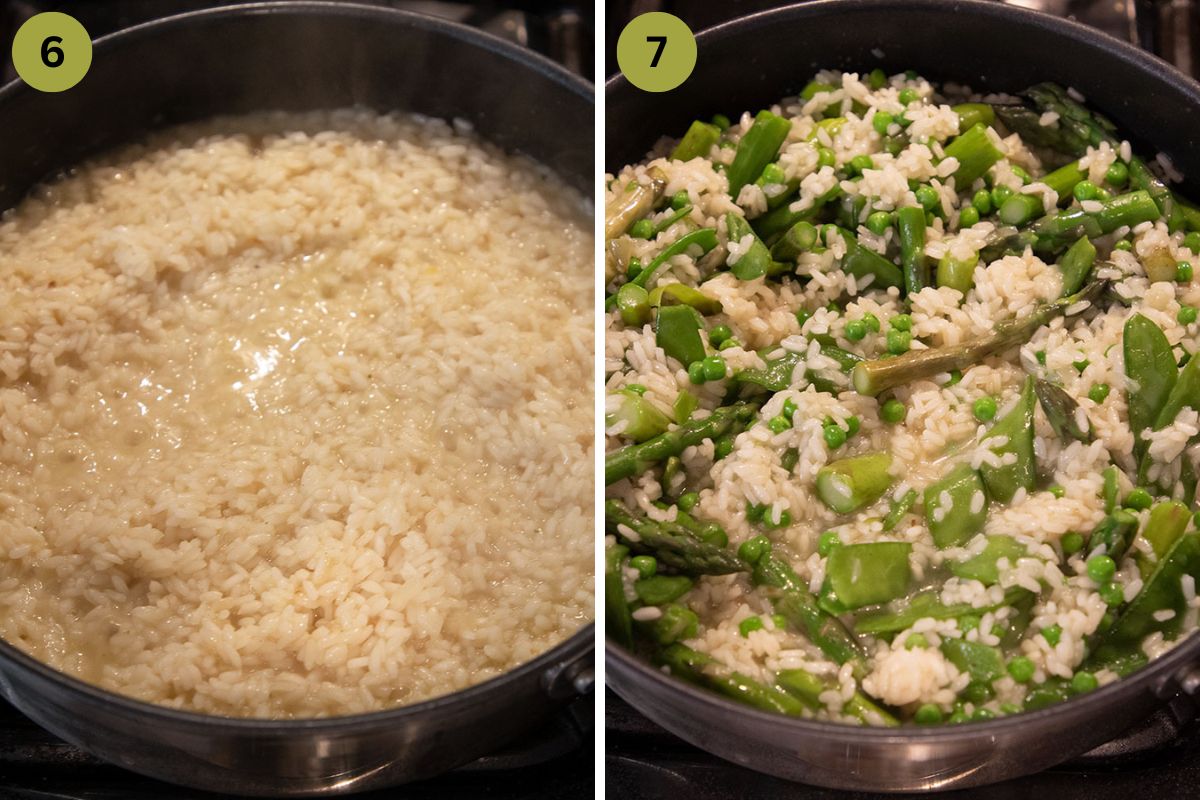
- Start adding the vegetable stock, about 1 cup at a time, stirring well with a wooden spoon after each addition and adding the next cup of broth when the previous has been completely absorbed (6).
- Continue cooking the pea and asparagus risotto on medium-low heat for about 15 minutes, then add the cooked asparagus and both kinds of peas to the rice mixture and continue cooking for 5 minutes or until the risotto is done (7).
- Check the cooking time written on the risotto packet and add the veggies during the last 5 minutes of the cooking process. Add some reserved asparagus water if you're out of broth, but the risotto still needs to be finished.
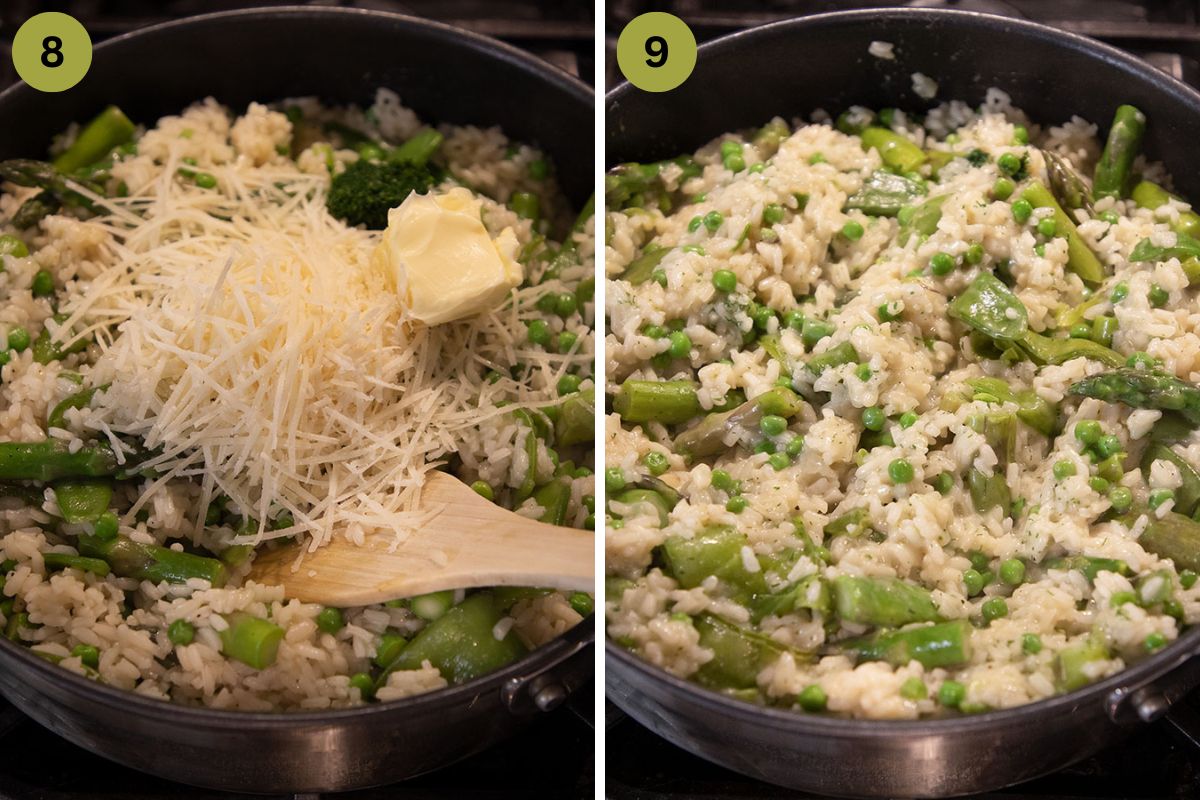
- Add most of the grated Parmesan, butter, and most of the dill (8). Adjust the taste with salt and pepper and sprinkle the remaining dill on top.
- Let the asparagus and pea risotto stand covered for 5 minutes, and serve the risotto with asparagus and peas with the remaining Parmesan (9).
Good to know!
To make white asparagus risotto, wash and peel the asparagus spears with a vegetable peeler. Remove the woody ends of the plant.
Bring the water to a boil, add the chopped spears (but not the tips of the plants), and cook them for about 5 minutes. Add the tips and cook for another 2 minutes or until the pieces are al dente. Try German Asparagus with White Sauce, too.
Liquid: Keep some of the asparagus cooking water, just in case you need more broth towards the end of the cooking process; you could use that instead.
Stirring risotto: Most recipes recommend standing by the stovetop and stirring continuously. You can if you have the time and the patience, but I never do. I tried it a few times and decided that there isn’t a noticeable difference between “continuously stirred” and “regularly stirred” risotto. I stir often but not continuously, and my risottos always have the perfect creamy consistency and rich flavor.
How to store risotto?
- This asparagus and pea risotto is best served immediately.
- However, you can refrigerate the leftover risotto in an airtight container for up to 3 days. It will thicken as it cools, so you will have to add a bit more vegetable broth when reheating.
- Reheat on the stovetop, often stirring, or in the microwave.
- Rice dishes don’t freeze well.
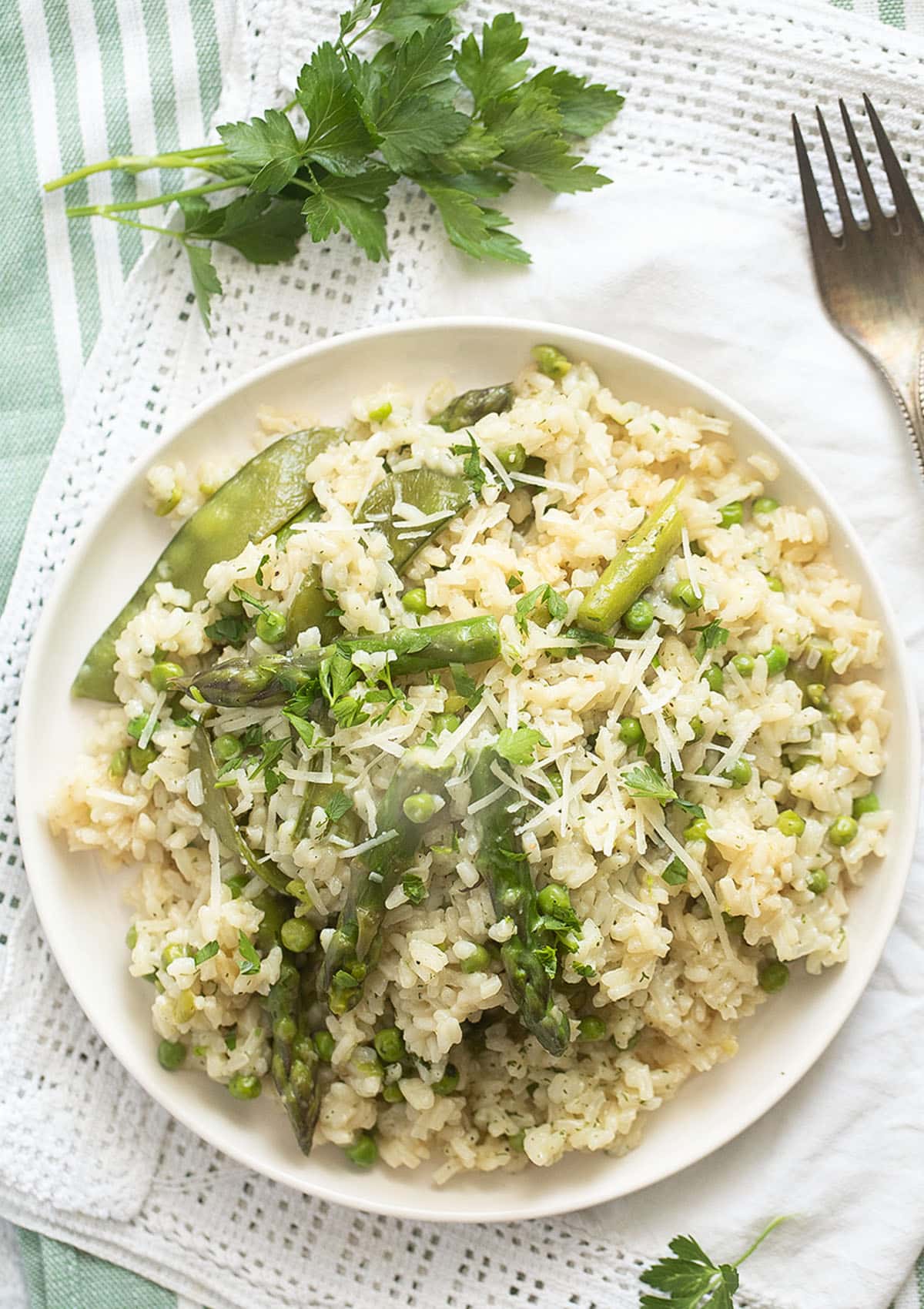
What to serve with pea and asparagus risotto?
Spring menu
- Starter: Easy Puff Pastry Spanakopita
- Side: Green salad with Raspberry Vinaigrette
- Dessert: Strawberry Rhubarb Bundt Cake or Strawberry Mascarpone Dessert
Do you like this recipe?
Please leave a good rating in the recipe card below. Stay in touch through social media: Pinterest, Facebook, and Instagram. Don’t forget to tag #whereismyspoon when you try a recipe!Recipe
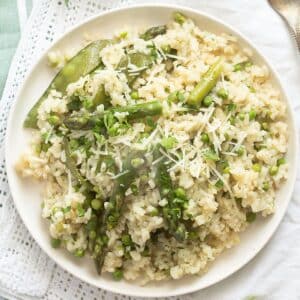
Pea and Asparagus Risotto
Equipment
- High-sided skillet
Ingredients
- 1 lb asparagus 450 g
- 2 cups risotto rice 400 g/ 14 oz, Note 1
- 1 tablespoon olive oil
- 3 tablespoons unsalted butter divided, Note 2
- 2 shallots finely chopped
- ½ cup dry white wine 125 ml
- 5 cups vegetable broth 1.2 liter
- 5.5 oz sugar snap peas 150 g
- 1 cup peas 150 g
- ½ cup Parmesan freshly grated, 50 g
- fine sea salt or kosher salt, to taste
- ground black pepper
- 3 tablespoons dill
Instructions
Prepare vegetables:
- Thaw peas: Remove the frozen peas from the freezer and let them thaw on the counter until needed. If using fresh snap peas, wash and drain them. 1 cup peas / 150 g + 5.5 oz sugar snap peas / 150 g
- Asparagus: Wash it and remove its lower, woody parts. Cut each stalk into smaller pieces (3-4, depending on size). Keep the asparagus tips in a separate bowl. 1 lb asparagus / 450 g
- Cook asparagus: Add water and salt to the skillet and bring it to a boil. Add only the chopped spears and cook them for 2-3 minutes. Then, add the tips and cook for another 2 minutes. The vegetables should still have a bite; they will cook for another 5 minutes in the risotto.
- Drain the asparagus and wipe the saucepan so you can use it to make the risotto.
Make the risotto:
- Pour the vegetable broth into a jug pan, place it on the stovetop on low heat, and keep it simmering all through the cooking process. 5 cups vegetable broth / 1.2 liter
- Sauté: Melt 1 tablespoon of the butter and oil in the skillet. Cook chopped shallots until translucent. Add the unwashed rice and stir well until it’s coated in oil and slightly translucent, about 2 minutes. 1 tablespoon butter from 3 tablespoons unsalted butter + 1 tablespoon olive oil + 2 shallots + 2 cups risotto rice / 400 g
- Pour in the wine, stir well, and let it bubble shortly. ½ cup dry white wine / 125 ml
- Start adding the vegetable broth, about 1 cup at a time, stirring well after each addition and adding the next cup when the previous has been completely absorbed.
- Add vegetables: Continue for about 15 minutes, then add the asparagus and all the peas and continue cooking for 5 minutes or until the risotto is done; it should be tender but not mushy (Note 3).
- Add most of the grated Parmesan, butter, and most of the dill. Adjust the taste with salt and pepper and sprinkle the remaining dill on top. ½ cup Parmesan 50 g + remaining 2 Tbs butter + 3 tablespoons dill + fine sea salt + ground black pepper
- Let stand for 5 minutes and serve with the remaining Parmesan.
Notes
- Risotto: Arborio, Carnaroli or Vialone Nano are all great. The texture and creaminess of the dish may vary slightly with different rice varieties.
- Butter: You will need 1 tablespoon for sauteing the onions and 2 tablespoon for finishing the risotto. If using salted butter, adjust the salt in the dish accordingly.
- Cooking time: Check the cooking time written on the risotto packet and add the veggies during the last 5 minutes of the cooking process. Add some reserved asparagus water if you're out of broth, but the risotto still needs to be finished.

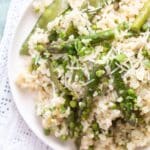
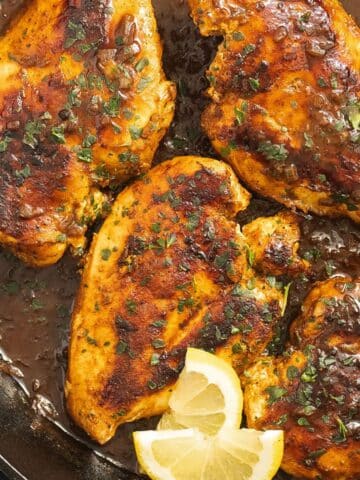
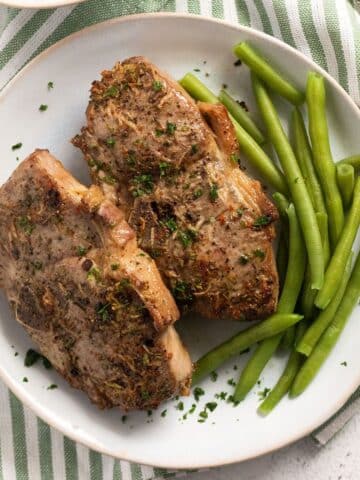
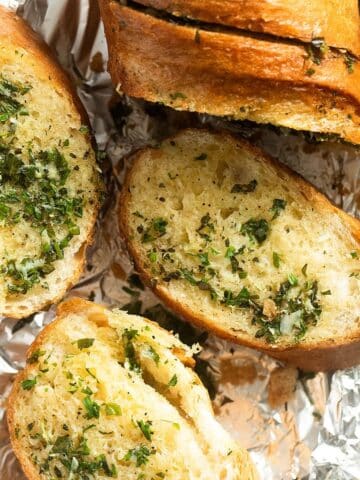

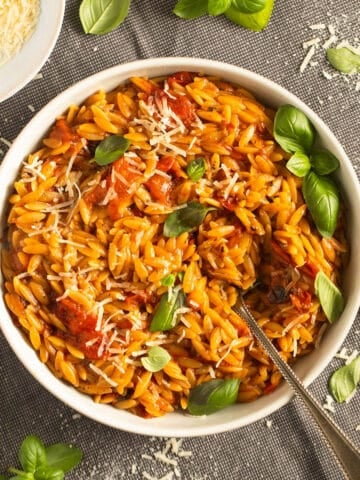
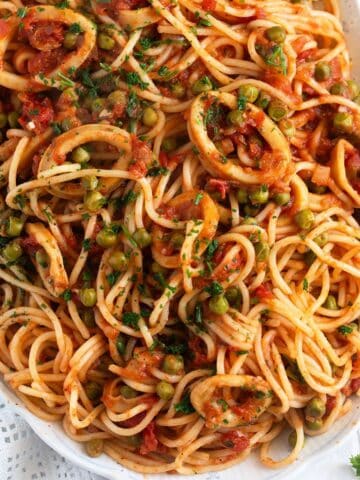
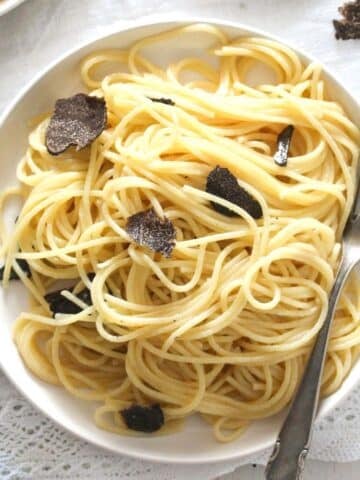

Evi @ greenevi says
Asparagus risotto is one of my all time favourite spring foods! This version with snap peas and green peas sounds even better!!!
Keith @ How's it Lookin? says
Looks so good. Anything with asparagus is fine by me, thanks a lot
Balvinder says
I absolutely LOVE risotto! It’s such a blank canvas that you can add anything to it that you love to eat.
Happy mother's day!
Angie@Angie's Recipes says
A perfect spring dish! My mom for sure will love this too.
Happy Mother's Day to you, Adina.